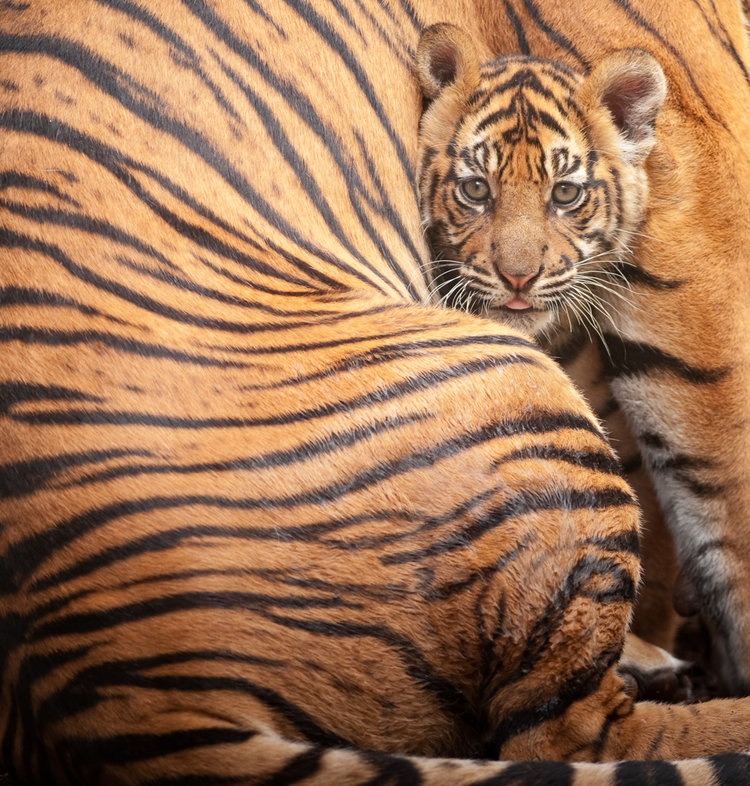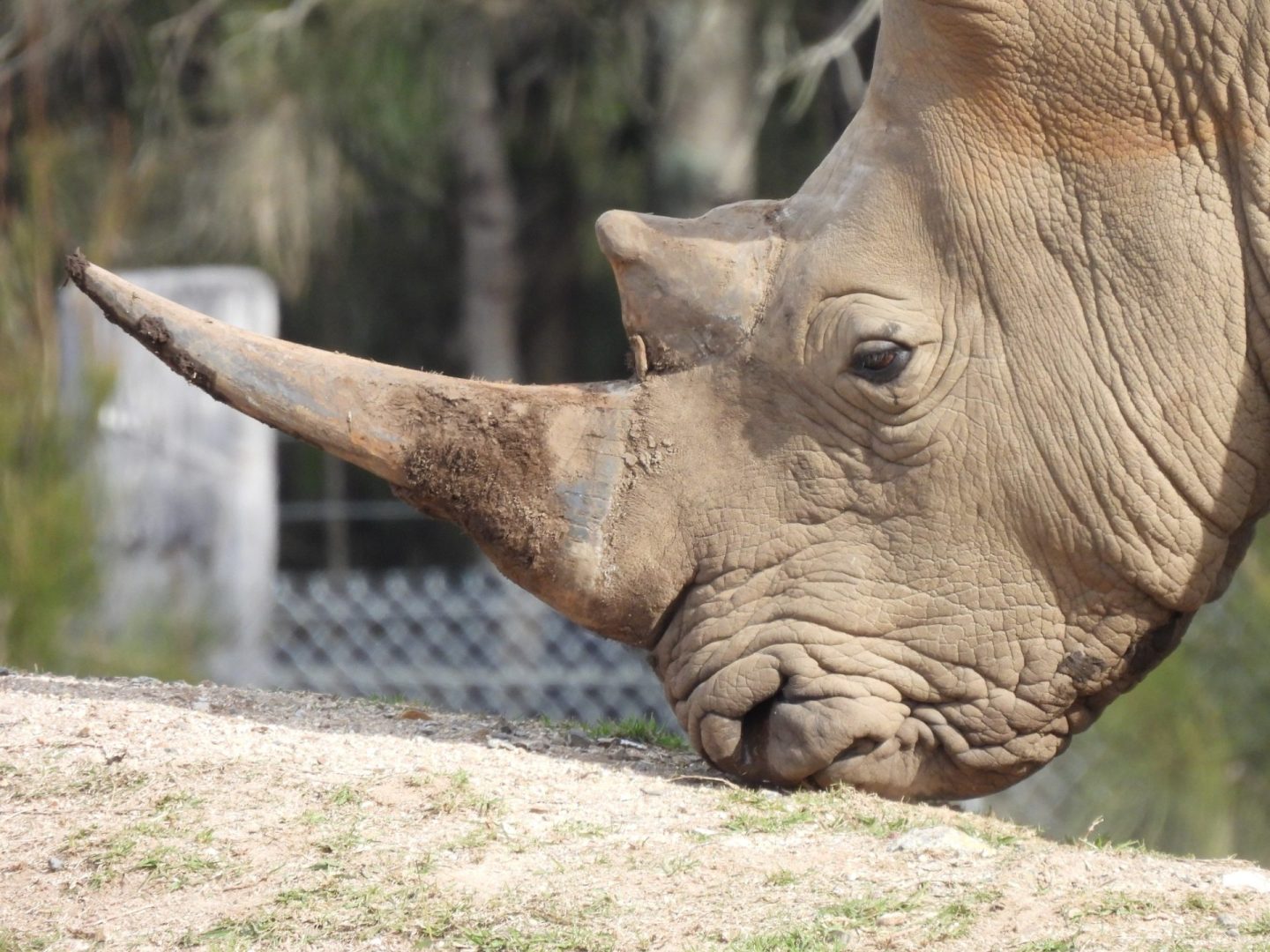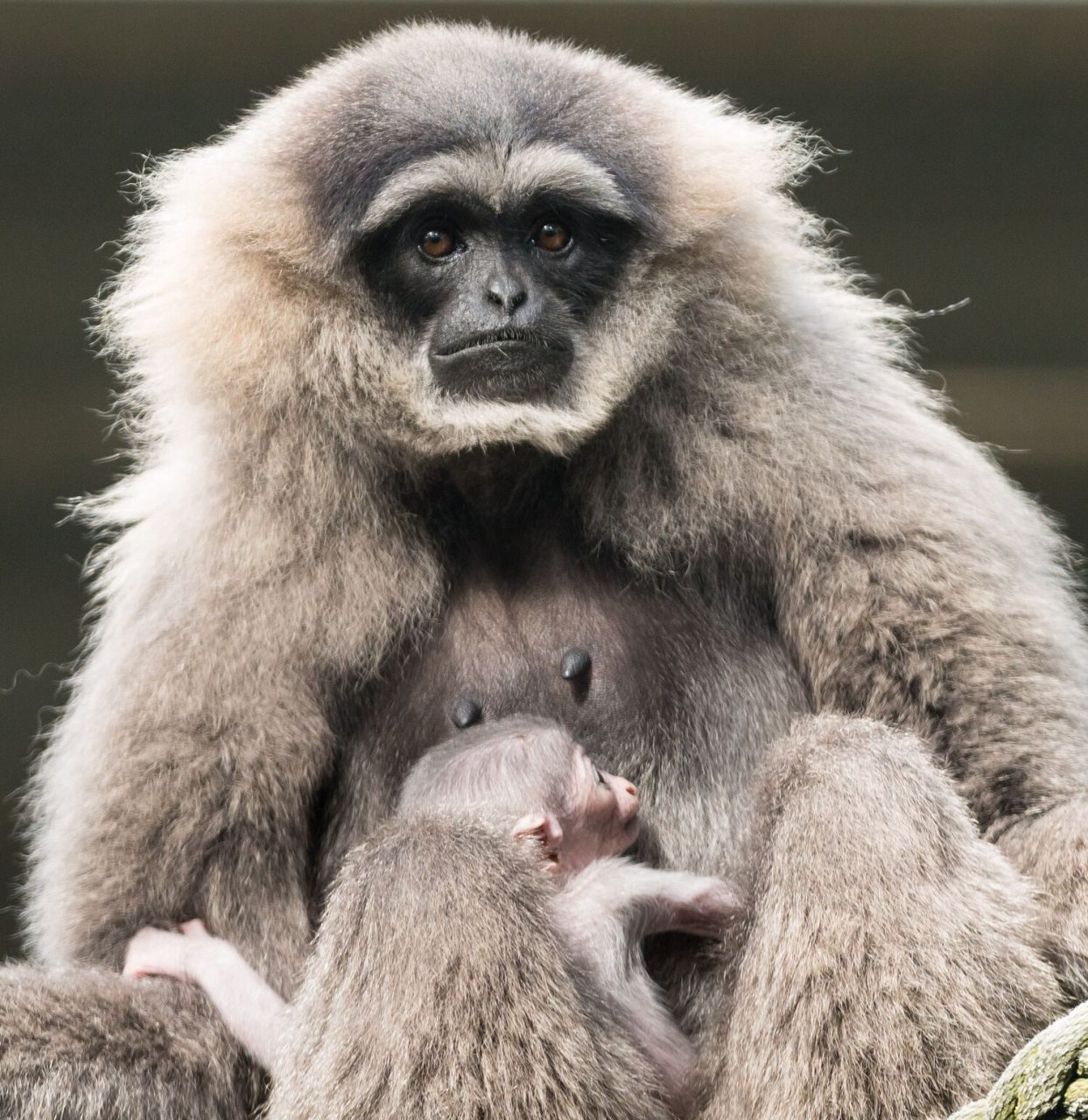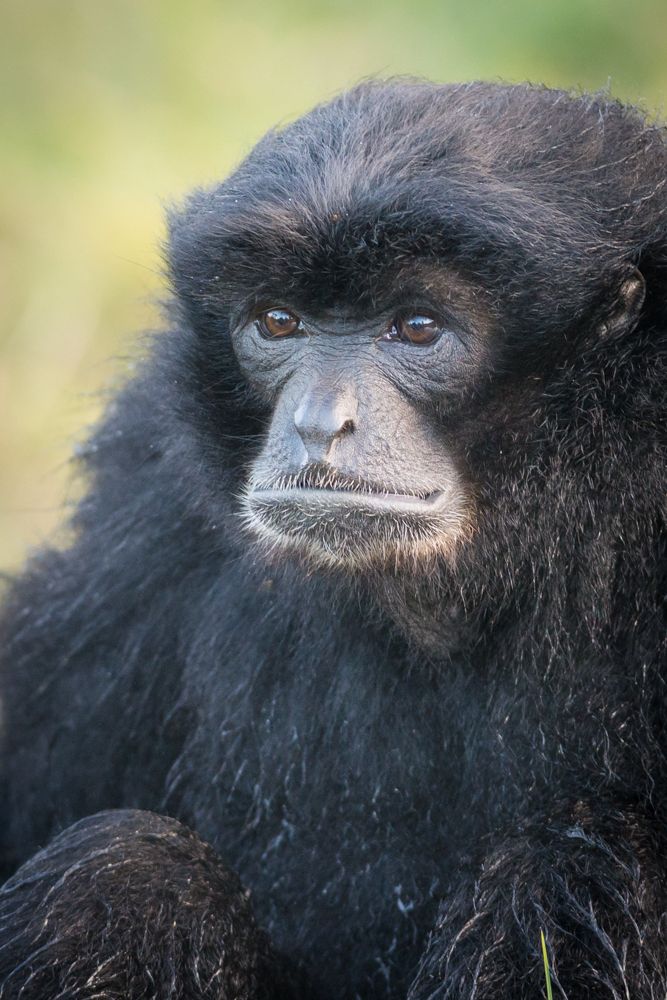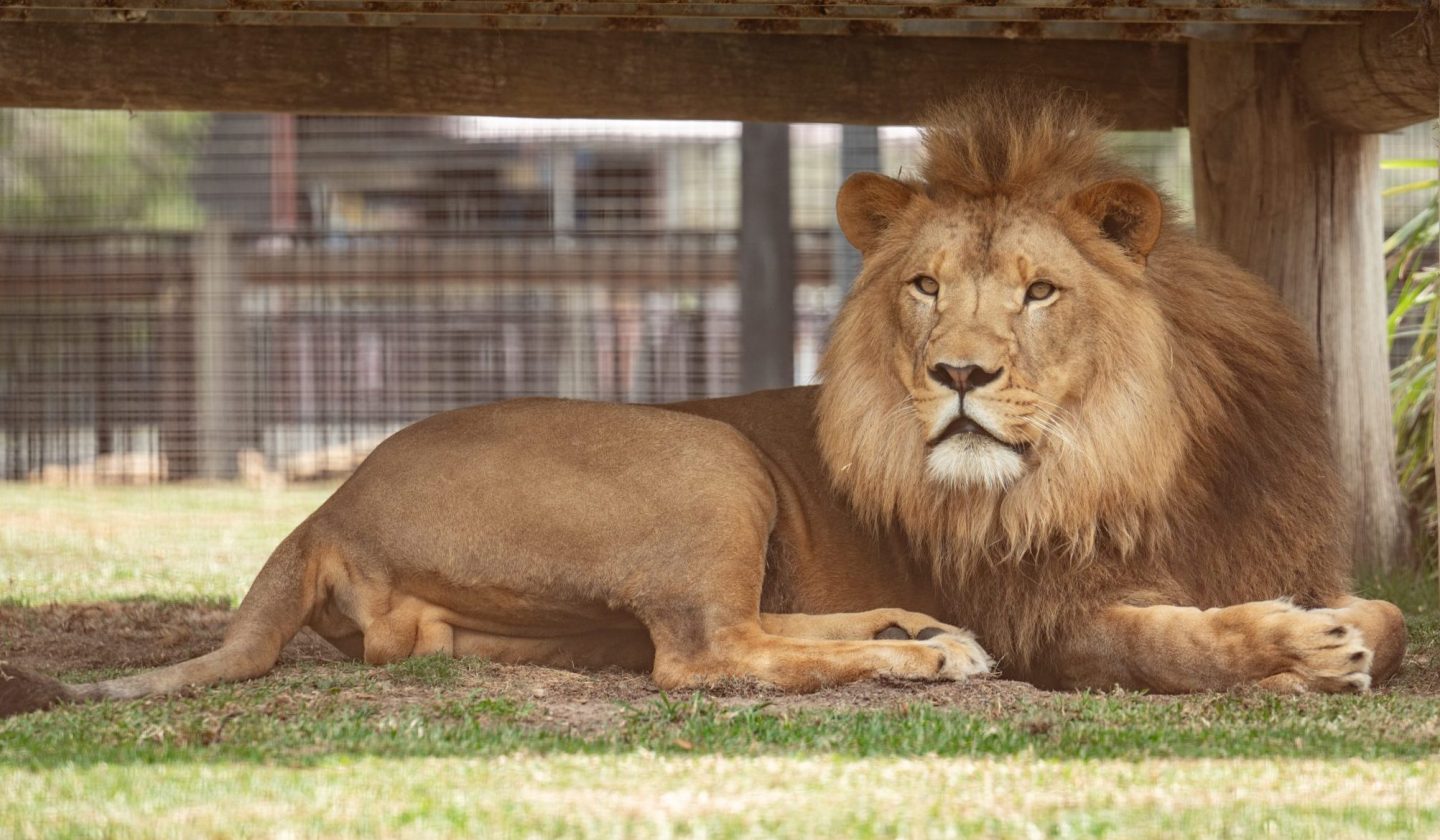White Rhino
SPECIES: Ceratotherium simum simum



White Rhinos are the most social and largest of the 5 Rhino sub-species. Rhinos live an average of 50 years in captivity. They graze in groups of up to 7. Although calves are weaned from their mother at around 12 months old, they usually stay with their mothers up until about 3 years old.
You may be surprised that Rhinos communicate with each other using their ears, nostrils, posture and complex breathing for communication and expression. These sounds can cary from calf squeaking, to snarling, or wailing by adults.
Natural behavior
White Rhino feed and rest alternately during the day and night, often resting in the hottest part of the day. Males live in small territorial ranges. Female home ranges are larger and may overlap several male territories. Home ranges are scent posted with dung heaps, also known as middens and usually located at territory boundaries. The size of the midden represents the rhino’s status
Description
White Rhino are one of the heaviest land animals in the world. Colouration is yellowish brown to slate grey. They produce 2 horns on their snout, made from keratin which can grow up to 1.8 meters in length. White rhino have a distinct flat broad mouth for grazing. All rhinos have poor eyesight but good hearing and a good sense of smell
Distribution
Southern Africa, with smaller trans located populations found in Kenya, Namibia and Zimbabwe
Diet
Herbivore; grazing mostly on grass
Reproduction
Breeding occurs throughout the year, after courtship and mating which lasts during 1 to 3 weeks. Males use scent to determine when females are approaching estrus. The territorial bull will join the female for up to 20 days until she is ready to mate
Social structure
Mother and calf stay together for long periods, often until the next calf is born, around 3 years. Sexually mature males tend to lead solitary lives
Threats
Habitat loss and poaching, horns for use in traditional Chinese medicine
ANIMAL FACTS
White Rhino
Habitat
Subtropical and tropical grasslands, forrests, shrublands, and desert

Did You Know?
Rhinos have bad eye sight but extremely good hearing.
Rhino can run up to speeds of 40km per hour.
Rhino can run up to speeds of 40km per hour.
MEET OUR
ANIMAL FAMILY

stay in touch with Your Australian wildlife parks family
Stay up-to-date and subscribe to our newsletters
Your information is only utilised by Australian Wildlife Parks. For more information see our privacy policy.
MOGO Wildlife Park acknowledges Aboriginal people as the traditional custodians of the land on which our offices and operations are located, and we pay our respects to Elders past, present and future.
© 2019-2024 Australian Wildlife Parks • Privacy Policy • Disclaimer

